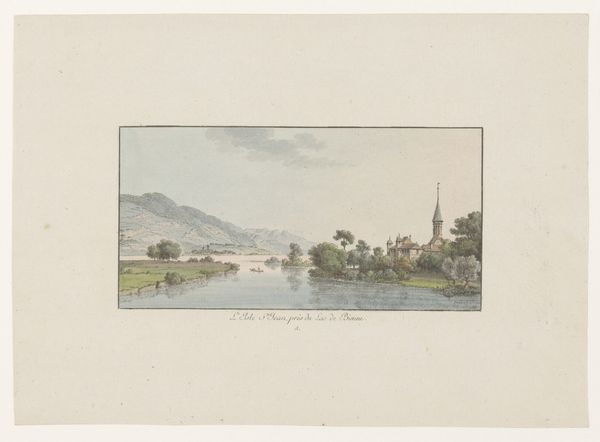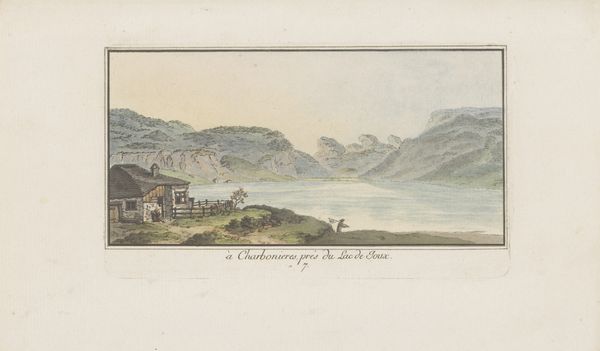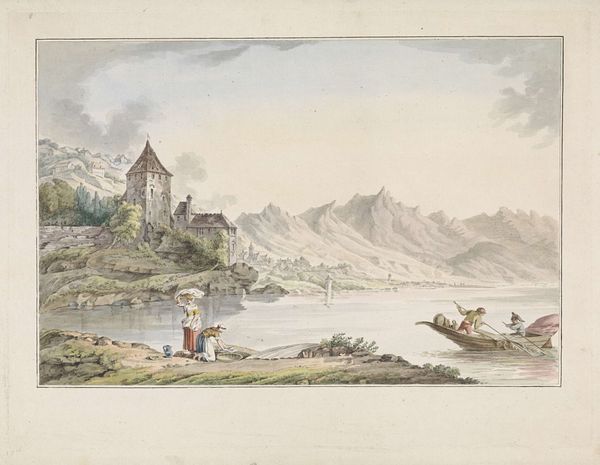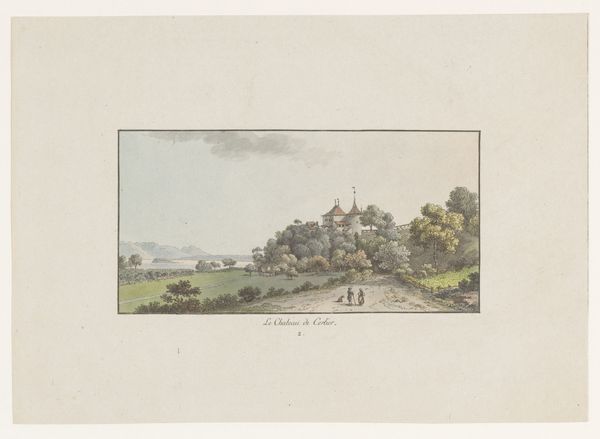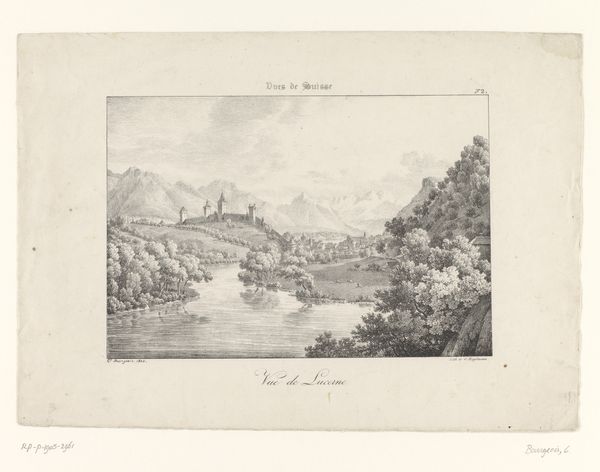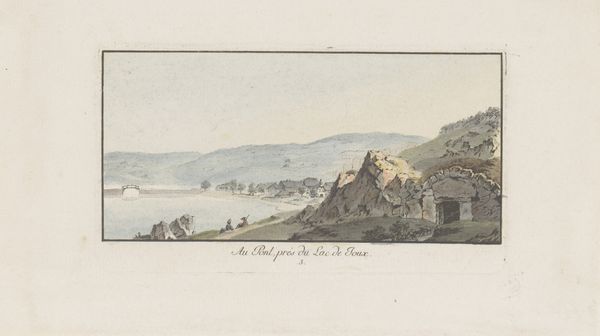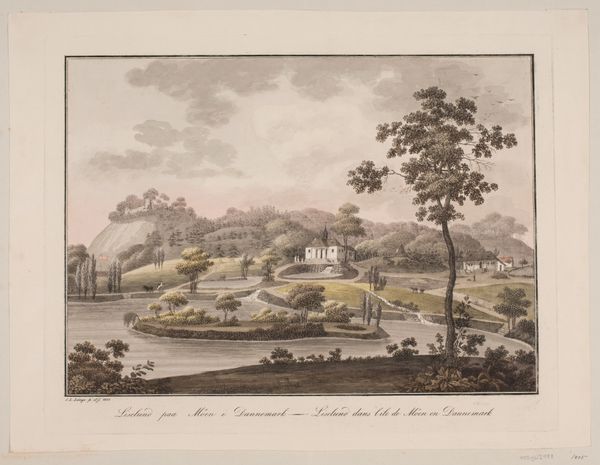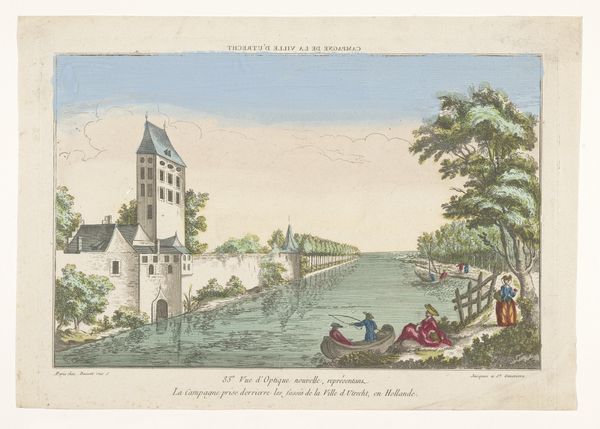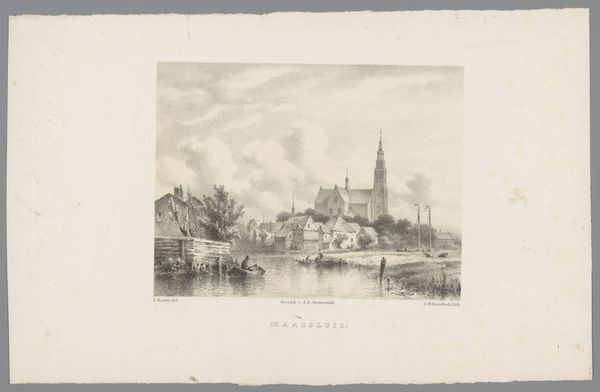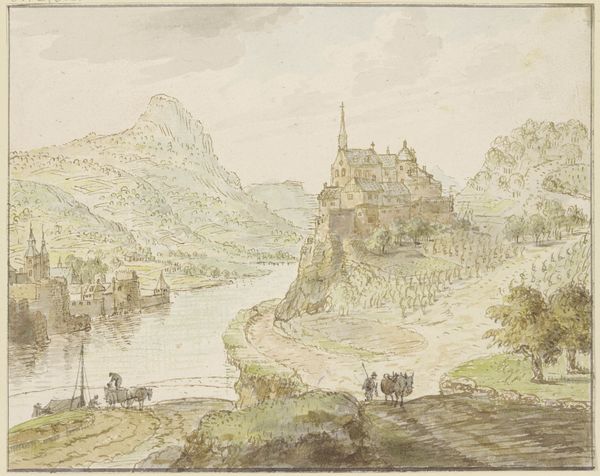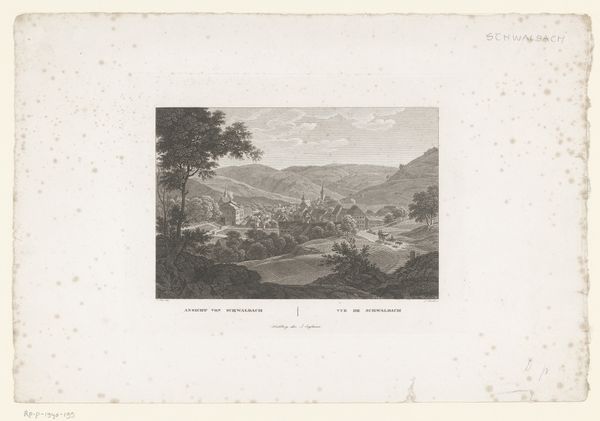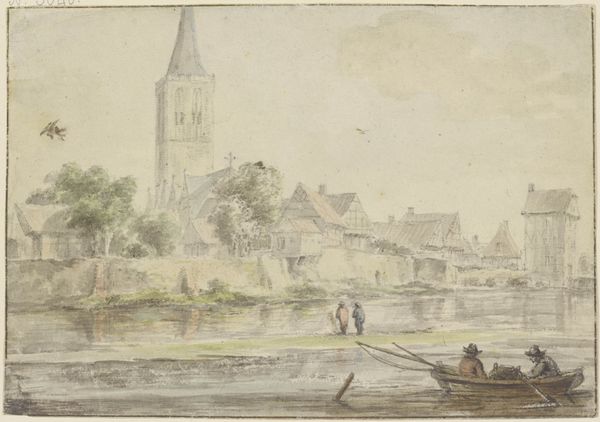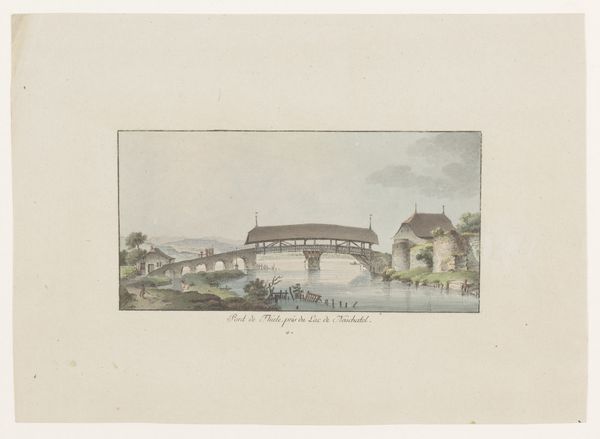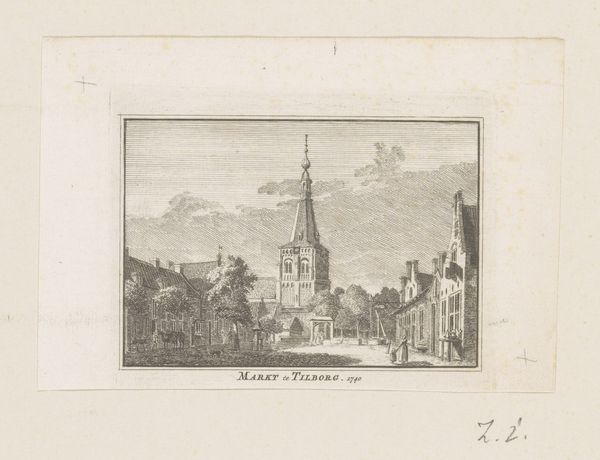
Dimensions: height 107 mm, width 179 mm
Copyright: Rijks Museum: Open Domain
Curator: This delicate watercolor by Heinrich Rieter captures a serene view of St. Peter's Island on Lake Biel, dating back to 1782. Editor: It feels so still, doesn't it? Almost dreamlike. The pastel colors, the soft rendering of the water and distant hills... it evokes a profound sense of peace. But it also seems…idealized. Curator: Certainly. It is a product of its time. The late 18th century saw a surge in Romanticism, and Rieter, a Swiss artist, was clearly influenced by the movement’s appreciation for nature. We have to understand these landscapes were rarely simple representations but embodied cultural and social values linked to concepts of nature and nation. Editor: Yes, and those values often centered on leisure and the sublime. I’m curious, who was this painted for? Was it commissioned or intended for public display? This context shapes my interpretation as much as the painter’s intentions. Curator: That's a critical point. While we don’t have precise commission details, knowing it's housed at the Rijksmuseum helps. It points to the work eventually finding its place within national narratives, perhaps signifying a vision of Switzerland. Look at how he positions the architecture, almost framing it with nature. Editor: Absolutely, that architectural insertion within this untouched scenery tells a lot about power dynamics, human intervention in the landscape, and of course religion. Curator: Note how the scale is somewhat flattened. This composition technique makes one ponder about the relationship between detail and accuracy at the time and how painting differed for instance from early forms of photography in its symbolic role. Editor: I think by looking closer into its materiality— the paper, the type of watercolor used - and comparing that against other contemporary art objects from Switzerland, we might discover the intersectional discourse about national identity at that particular moment. Curator: Indeed, by investigating the market for landscape watercolors during this time period, and who the intended consumer of such artworks may be. Editor: Understanding those things will allow us to develop an increasingly more nuanced socio-historical analysis. It’s a testament to how seemingly simple landscapes like these hold a depth of historical information if we’re willing to dig for it. Curator: Ultimately, by considering historical context, material culture, and artistic choices, we unlock richer meaning. Editor: Yes. Artworks like this landscape serve as great entry points into the past.
Comments
No comments
Be the first to comment and join the conversation on the ultimate creative platform.
